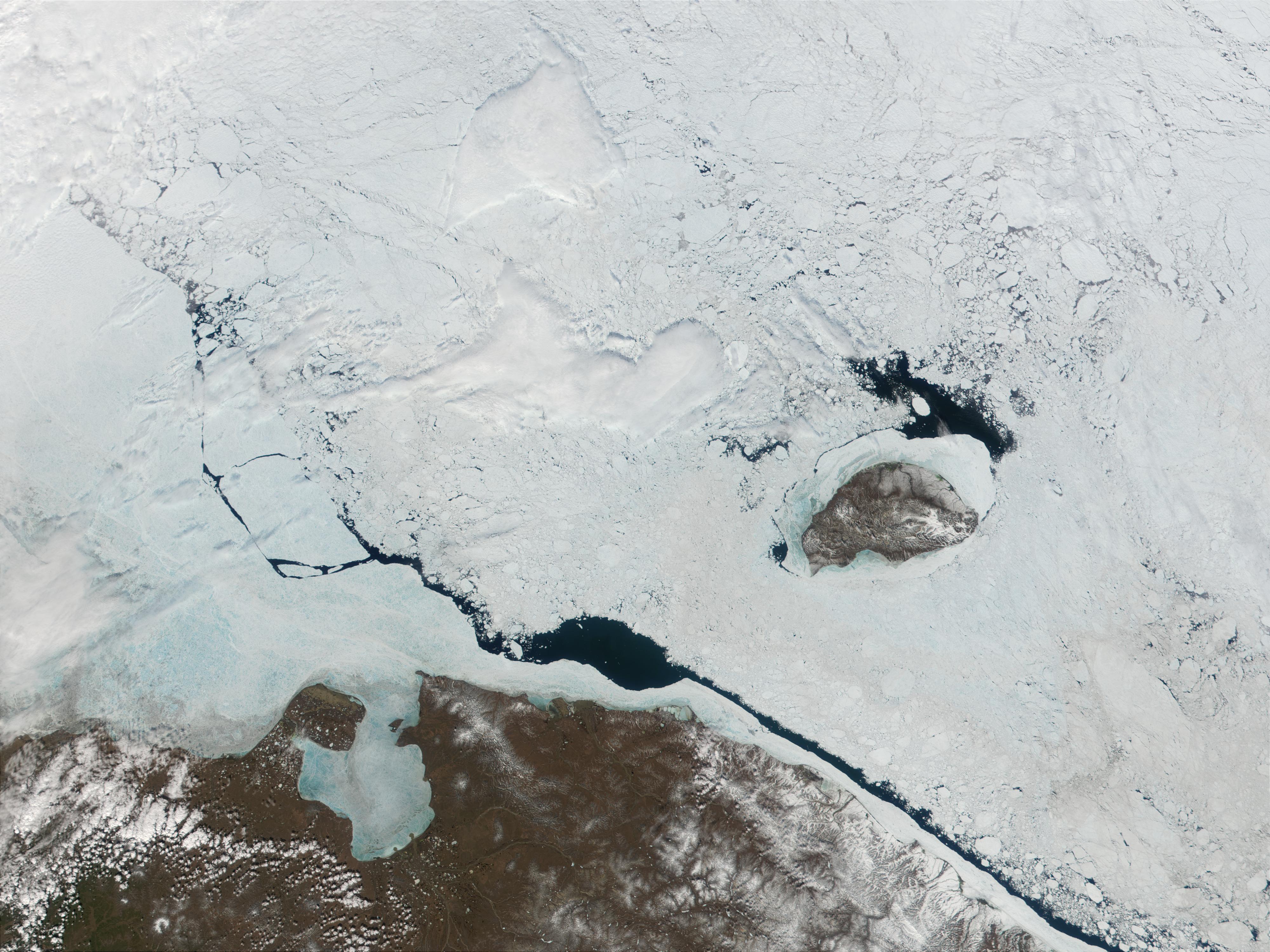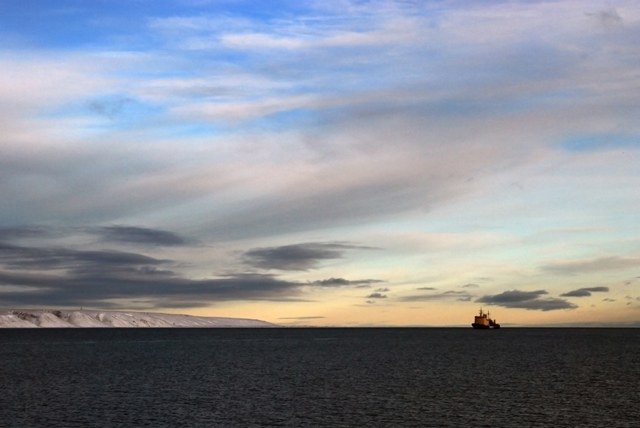|
Pegtymel River
The Pegtymel (russian: Пегтымель) is a river in Far East Siberia, Russia. It is long, and has a drainage basin of . It passes through the sparsely populated areas of the Siberian tundra and flows into the East Siberian Sea west of the Long Strait. Its mouth is between Cape Shelagsky on Chaunskaya Bay and Cape Billings to the east. Its most important tributary is the Kuvet which joins it from the right side. The Pegtymel and its tributaries belong to the Chukotka Autonomous Okrug administrative region of Russia. There are ancient rock paintings on a site close to the Pegtymel. The petroglyphs show boats, reindeer Reindeer (in North American English, known as caribou if wild and ''reindeer'' if domesticated) are deer in the genus ''Rangifer''. For the last few decades, reindeer were assigned to one species, ''Rangifer tarandus'', with about 10 sub ... hunting, and mushroom-headed figures likely representing a ritual with th hallucinognic mushroom fly agaric ... [...More Info...] [...Related Items...] OR: [Wikipedia] [Google] [Baidu] |
East Siberian Sea
The East Siberian Sea ( rus, Восто́чно-Сиби́рское мо́ре, r=Vostochno-Sibirskoye more) is a marginal sea in the Arctic Ocean. It is located between the Arctic Cape to the north, the coast of Siberia to the south, the New Siberian Islands to the west and Cape Billings, close to Chukotka, and Wrangel Island to the east. This sea borders on the Laptev Sea to the west and the Chukchi Sea to the east. This sea is one of the least studied in the Arctic area. It is characterized by severe climate, low water salinity, and a scarcity of flora, fauna and human population, as well as shallow depths (mostly less than 50 m), slow sea currents, low tides (below 25 cm), frequent fogs, especially in summer, and an abundance of ice fields which fully melt only in August–September. The sea shores were inhabited for thousands of years by indigenous tribes of Yukaghirs, Chukchi and then Evens and Evenks, which were engaged in fishing, hunting and reindeer husbandry. ... [...More Info...] [...Related Items...] OR: [Wikipedia] [Google] [Baidu] |
Russia
Russia (, , ), or the Russian Federation, is a List of transcontinental countries, transcontinental country spanning Eastern Europe and North Asia, Northern Asia. It is the List of countries and dependencies by area, largest country in the world, with its internationally recognised territory covering , and encompassing one-eighth of Earth's inhabitable landmass. Russia extends across Time in Russia, eleven time zones and shares Borders of Russia, land boundaries with fourteen countries, more than List of countries and territories by land borders, any other country but China. It is the List of countries and dependencies by population, world's ninth-most populous country and List of European countries by population, Europe's most populous country, with a population of 146 million people. The country's capital and List of cities and towns in Russia by population, largest city is Moscow, the List of European cities by population within city limits, largest city entirely within E ... [...More Info...] [...Related Items...] OR: [Wikipedia] [Google] [Baidu] |
Long Strait
The Long Strait (russian: пролив Лонга; ''Proliv Longa'') is a body of water in the Russian Federation. History This strait was named after the American whaling captain Thomas W. Long. In August 1983, it was the site of a disaster when 50 ships were trapped in ice, with the loss of one and damage to as many as 30 others. Geography This strait separates Wrangel Island from the Siberian mainland. It is very broad, its minimum width being 141 km, between Cape Blossom at the southwestern tip of Wrangel Island and Cape Yakan, 65 km east of Cape Billings, close to Gytkhelen, Chukotka.GoogleEarth The Long Strait is also a geographic landmark connecting the East Siberian Sea and the Chukchi Sea Chukchi Sea ( rus, Чуко́тское мо́ре, r=Chukotskoye more, p=tɕʊˈkotskəjə ˈmorʲɪ), sometimes referred to as the Chuuk Sea, Chukotsk Sea or the Sea of Chukotsk, is a marginal sea of the Arctic Ocean. It is bounded on the west b .... References External ... [...More Info...] [...Related Items...] OR: [Wikipedia] [Google] [Baidu] |
Cape Shelagsky
Cape Shelagsky or Cape Shelag (russian: Мыс Шелагский; ckt, Ытрин, translit=Ytrin), also known as Erri by the Siberian Yupik, is a headland situated in eastern Siberia, Russia on the shores of the East Siberian Sea.Google Earth The cape was named after the Shelags, a little-known ethnic group that lived on the Arctic coast to the east of Cape Shelagsky. Geography It is the eastern headland at the entrance of Chaun Bay. The cape is located at the western end of the Shelag Range, the northwesternmost subrange of the Chukotka Mountains The Chukotka Mountains ( rus, Чукотское нагорье) or Chukotka Upland ''(Чукотская горная страна)'' is a mountainous area in the Chukotka Autonomous Okrug, Far Eastern Federal District, Russia. [...More Info...] [...Related Items...] OR: [Wikipedia] [Google] [Baidu] |
Chaunskaya Bay
The Chaunskaya Bay or Chaun Bay (russian: Чаунская губа) is an Arctic bay in the East Siberian Sea, in the Chaunsky District of Chukotka, northeast Siberia. There is Port of Pevek. Geography The bay is open to the north and is 140 km in length. Its maximum width is 110 km.GoogleEarth Its mouth is defined by Cape Shelagsky, the end of the Shelag Range, to the east and an unnamed part of Ayon Island to the west. It narrows where the Pevek Peninsula on the east approaches Ayon Island. Owing to is northerly location Chaunskaya Bay is covered with ice most of the year. This bay is the center of one of the larger lowlands in Chukotka. A number of rivers flow into the southeastern corner: Chaun River, Ichuveyem River, Palyavaam River, Lelyuveyem River and Pucheveyem River. There is a protected natural area in the southeast. Lake Elgygytgyn is about 160 km southeast and the town of Bilibino about 160 km southwest. History The first Russian to reac ... [...More Info...] [...Related Items...] OR: [Wikipedia] [Google] [Baidu] |
Cape Billings
Cape Billings (russian: Мыс Биллингса - ''Mys Billingsa''), is a headland on the northern coast of Chukotka, Russian Federation to the west of Cape Schmidt. Geography The shore in the area around Cape Billings is bounded by narrow landspits, beach ridges and swales enclosing a series of coastal inshore lagoons, with the Long Strait lies north of this headland. The Chukchi settlement of Billings, is located close to the cape. There is a curious series of linked oval lakes of decreasing size along the shore towards west from the cape. Cape Yakan is located about 65 km to the east of Cape Billings. Climate Cape Billings has a Tundra climate (''ET'') because the warmest month has an average temperature between and . Wildlife The Fuzzy hermit crab ''(Pagurus trigonocheirus)'' inhabits the waters off Cape Billings. Etymology This cape was named after British Captain Joseph Billings (1758–1806) who was at the service of the Russian Imperial Navy during Empress Cathe ... [...More Info...] [...Related Items...] OR: [Wikipedia] [Google] [Baidu] |
Chukotka Autonomous Okrug
Chukotka (russian: Чуко́тка), officially the Chukotka Autonomous Okrug,, ''Čukotkakèn avtonomnykèn okrug'', is the easternmost federal subjects of Russia, federal subject of Russia. It is an autonomous okrug situated in the Russian Far East, and shares a border with the Sakha, Sakha Republic to the west, Magadan Oblast to the south-west, and Kamchatka Krai to the south. Anadyr (town), Anadyr is the largest types of inhabited localities in Russia, town and the administrative center, capital, and the easternmost settlement to have town status in Russia. Chukotka is primarily populated by ethnic Russians, Chukchi people, Chukchi, and other Indigenous peoples of Siberia, indigenous peoples. It is the only autonomous okrug in Russia that is not included in, or subordinate to, another federal subject, having separated from Magadan Oblast in 1992. It is home to Lake Elgygytgyn, an impact crater lake, and Anyuyskiy, an extinct volcano. The village of Uelen is the easternmos ... [...More Info...] [...Related Items...] OR: [Wikipedia] [Google] [Baidu] |
Petroglyphs
A petroglyph is an image created by removing part of a rock surface by incising, picking, carving, or abrading, as a form of rock art. Outside North America, scholars often use terms such as "carving", "engraving", or other descriptions of the technique to refer to such images. Petroglyphs are found worldwide, and are often associated with prehistoric peoples. The word comes from the Greek prefix , from meaning "stone", and meaning "carve", and was originally coined in French as . Another form of petroglyph, normally found in literate cultures, a rock relief or rock-cut relief is a relief sculpture carved on "living rock" such as a cliff, rather than a detached piece of stone. While these relief carvings are a category of rock art, sometimes found in conjunction with rock-cut architecture, they tend to be omitted in most works on rock art, which concentrate on engravings and paintings by prehistoric or nonliterate cultures. Some of these reliefs exploit the rock's na ... [...More Info...] [...Related Items...] OR: [Wikipedia] [Google] [Baidu] |
Reindeer
Reindeer (in North American English, known as caribou if wild and ''reindeer'' if domesticated) are deer in the genus ''Rangifer''. For the last few decades, reindeer were assigned to one species, ''Rangifer tarandus'', with about 10 subspecies. A 2022 revision of the genus elevated five of the subspecies to species (see Taxonomy below). They have a circumpolar distribution and are native to the Arctic, sub-Arctic, tundra, boreal forest, and mountainous regions of northern Europe, Siberia, and North America. Reindeer occur in both migratory and sedentary populations, and their herd sizes vary greatly in different regions. The tundra subspecies are adapted for extreme cold, and some are adapted for long-distance migration. Reindeer vary greatly in size and color from the smallest species, the Svalbard reindeer (''R. t. platyrhynchus''), to the largest subspecies, Osborn's caribou (''R. t. osborni''). Although reindeer are quite numerous, some species and subspecies are in d ... [...More Info...] [...Related Items...] OR: [Wikipedia] [Google] [Baidu] |
Amanita Muscaria
''Amanita muscaria'', commonly known as the fly agaric or fly amanita, is a basidiomycete of the genus ''Amanita''. It is also a muscimol mushroom. Native throughout the temperate and boreal regions of the Northern Hemisphere, ''Amanita muscaria'' has been unintentionally introduced to many countries in the Southern Hemisphere, generally as a symbiont with pine and birch plantations, and is now a true cosmopolitan species. It associates with various deciduous and coniferous trees. Arguably the most iconic toadstool species, the fly agaric is a large white- gilled, white-spotted, usually red mushroom, and is one of the most recognizable and widely encountered in popular culture, including in video games—e.g., the extensive use of a recognizable ''Amanita muscaria'' in the Mario franchise and its Super Mushroom power-up—and television—e.g., the houses in The Smurfs franchise. Despite its easily distinguishable features, ''Amanita muscaria'' is a fungus with several know ... [...More Info...] [...Related Items...] OR: [Wikipedia] [Google] [Baidu] |
Rivers Of Chukotka Autonomous Okrug
A river is a natural flowing watercourse, usually freshwater, flowing towards an ocean, sea, lake or another river. In some cases, a river flows into the ground and becomes dry at the end of its course without reaching another body of water. Small rivers can be referred to using names such as creek, brook, rivulet, and rill. There are no official definitions for the generic term river as applied to geographic features, although in some countries or communities a stream is defined by its size. Many names for small rivers are specific to geographic location; examples are "run" in some parts of the United States, "burn" in Scotland and northeast England, and "beck" in northern England. Sometimes a river is defined as being larger than a creek, but not always: the language is vague. Rivers are part of the water cycle. Water generally collects in a river from precipitation through a drainage basin from surface runoff and other sources such as groundwater recharge, springs, a ... [...More Info...] [...Related Items...] OR: [Wikipedia] [Google] [Baidu] |






